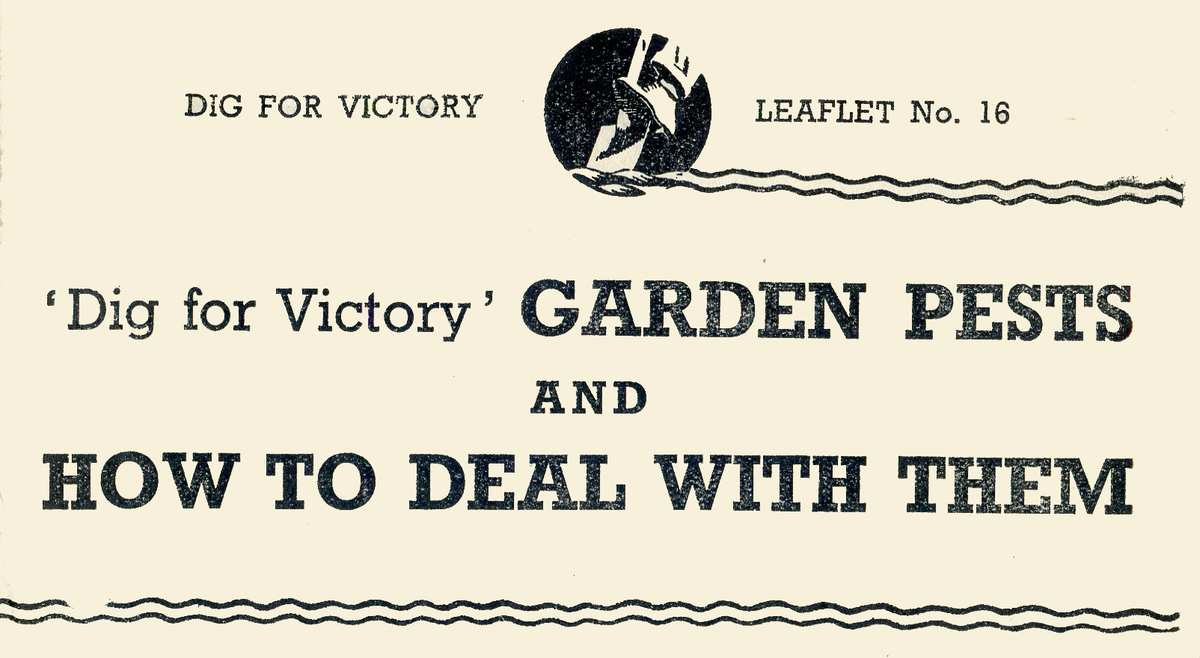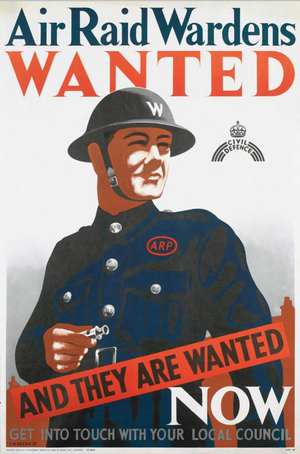 GARDEN PESTS AND HOW TO DEAL WITH THEM
GARDEN PESTS AND HOW TO DEAL WITH THEM
DIG FOR VICTORY LEAFLET No. 16 (Page 4 of 4)
Weed’s encourage pests, and weak plants are more likely to succumb when attacked than those that are growing strongly. Pest control measures must not be expected to compensate deficiencies in cultivation or manuring.
INSECTICIDES
Of the insecticides listed here, in use in 1941, pyrethrum and metaldehyde are still available and in common use.
Derris, a natural product made from the root of the derris plant, was in use for many years until a related chemical was found to cause cancer when given in large doses to rats. Then it was delisted and is no longer available in the EU.
Nicotine is highly poisonous to mammals (including people) as well as all insects, friend and foe alike. Gardeners making up nicotine sprays sometimes stored the liquid in unmarked bottles which presented a risk to inquisitive children.
You may come across recipes for making a nicotine insecticide by boiling up cigarette ends. This is just as poisonous and indiscriminate as the solution made as listed below. Nicotine is not an approved insecticide nowadays.
DERRIS ROOT.
Non-poisonous (except to fish). Valuable for destroying caterpillars on cabbages and flea beetles on seedlings. Sold as a ready-prepared dust for ” dry spraying ” ; as a preparation or extract for mixing with water ; and as Derris powder (ground Derris root), which is made into a wash according to the following formula :—
Derris powder … 1 oz.
Soft soap … … … … ¼ lb.
Water … … … … … … 3 gal.
PYRETHRUM.
This is non-poisonous ; and specially useful for killing Greenfly (Aphides). Sold as an extract (under various proprietary names) for dilution with water according to the maker’s instructions. Also sold for household use as anti-vermin powder which, if desired, may be employed for dusting on plants.
NICOTINE.*
Very poisonous; but when a very weak solution in water is sprayed it does not retain its poisonous nature for long. Destructive to most forms of insect life, notably to Greenfly
(Aphides). Sold as a ready-prepared dust containing from 2 to 4 per cent, nicotine for dusting, or in the form of various proprietary nicotine preparations, or as nicotine (95-98 per cent. pure). Pure nicotine is used for making washes according to the following formula :—
Nicotine (98 per cent.) … ½ fluid oz.
Soft soap ……… ½ Ib.
Water………5 gal.
*Purchasers of Nicotine are required to sign the Poison Book
METALDEHYDE (” MET A “).
Injurious if eaten in quantity, but harmless when properly used. Invaluable for the destruction of slugs and snails, but not effective against other pests.
Sold as a ready-prepared bait or in the form of powder, sticks or tablets (which must be crushed to a fine powder) and used according to the following formula :
Metaldehyde … … … 1 oz.
Bran … … … … … … … 3 lb.
The bran and metaldehyde are well mixed and sufficient water added to render the mixture slightly damp, but not enough to cause the flakes of bran to stick together ; or if preferred, the mixture may be used dry.
Further Advice.—Expert advice on pest control, or any other problem of vegetable cultivation, is available free of charge to all growers, whether on a large or small scale.
In urban areas, inquiry should be made of the Town Cleric. In rural areas, the services of the County Agricultural Organizer, at the County Council Offices, or of the County Agricultural Executive Officer, should be sought.
Further details on pests and diseases can be found in the Ministry’s publications, particularly in Growmore Bulletin No. 2, “Pests and-Diseases in the Vegetable Garden, ” which may be obtained from H.M. Stationery Office, York House, Kingsway, London, W.C.2, price 4d. (5d. post free), or through any bookseller.
Issued by the Ministry of Agriculture and Fisheries, Hotel Lindum — St. Annes-on-Sea — Lancashire.
May 1941


